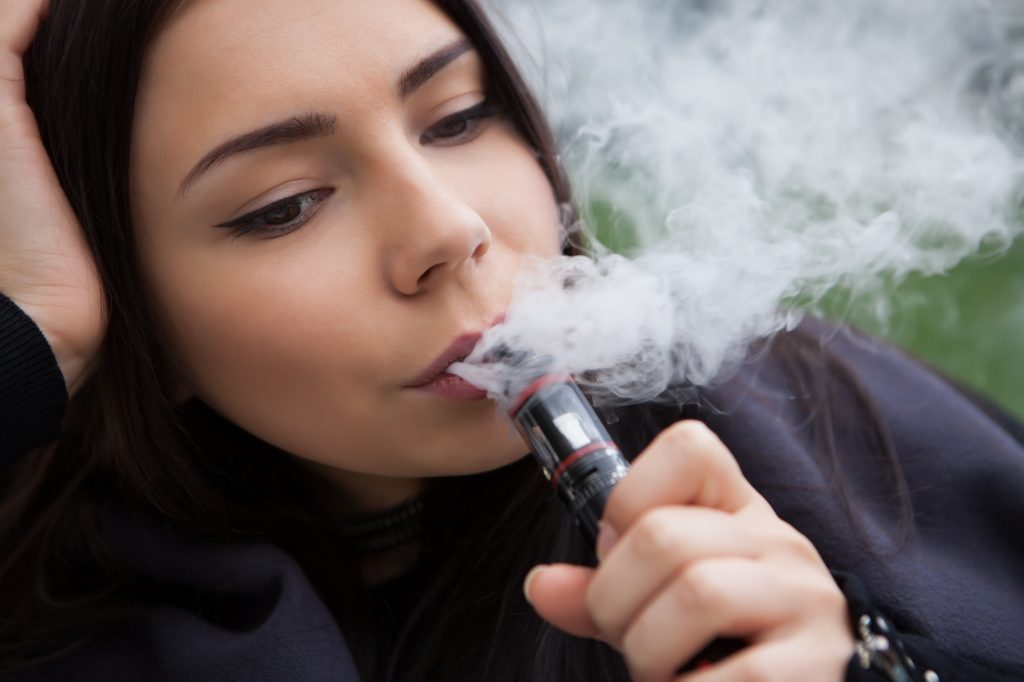
Is it better to vape or smoke? Let’s settle the age-old debate about vaping vs. smoking once and for all.
Given the public health reputation of smoking, the tobacco industry has tried to find ways to make smoking ciggies less harmful. Some of these changes included adding filters and promoting the use of “light” cigarettes. For the most part, marketing them that way was a success, but the claim that the health risks were mitigated was simply untrue.
Now here comes the new kid on the block, vaping via e-cig, pen, or pod. Vaping has garnered the reputation of a safer way of nicotine consumption. As you know, nicotine is tobacco’s active ingredient and is one of the most addictive substances known.
Let’s examine which nicotine-delivery method, smoking or vaping, is better for your health, wallet, and getting that nicotine fix.
Vaping vs. Smoking: Health Risks
Cigarette smoking has long been established as very damaging to human health. Years of research support this claim, and we now know that smoking harms almost every organ in your body. Ninety percent of all lung cancer deaths can be attributed to smoking, and there’s also an increased risk of developing heart disease and stroke.
While nicotine is the reason why people smoke cigs, it’s not considered toxic. Sure, it can cause memory issues and concentration problems, not to mention that it’s highly addictive. But it’s the byproducts of burning tobacco, about 7,000 chemicals, that cause major health issues.
Scientists, in general, agree that vaping exposes the user to fewer toxicants than traditional smoking.
Is vaping safe, then? Not necessarily; there are vaping health risks and vaping side effects that you should keep in mind. Of particular note is EVALI.
What Is EVALI?
EVALI stands for e-cigarette or vaping use-associated lung injury. The CDC has identified that Vitamin E acetate in THC vaping products is primarily responsible for EVALI symptoms.
Vaping products from informal or black market sources are likely to contain this harmful substance. Only trust reputable dealers, such as Vape Industries, for your vape supplies.
Nicotine Delivery
Both vaping and smoking share the same purpose of providing nicotine to the user. However, they differ in the delivery mechanism and the amount of nicotine they give.
The nicotine amount is typically fixed per cigarette. In vaping, on the other hand, you can control how much nicotine goes into your body. You can choose the strength of the e-liquid, and you can even pick one that doesn’t have any nicotine at all.
And because vaping isn’t nearly as toxic as burning tobacco, the CDC recognizes the potential of vaping as a complete substitute for smoking. But they also caution that only adult smokers should benefit from this, and not for use by the youth, young adults, and pregnant women.
Costs
If you need your nicotine fix one way or another, consider the costs of your habit. Aside from the initial setup cost, vaping is much less expensive than smoking.
Smoking a pack of squares every day adds up to about $9,000 for the entire year. Meanwhile, vaping only costs a tenth of that figure for the same period of consumption.
Wrapping up the Debate
When comparing vaping vs. smoking, vaping comes out as the clear winner. Vaping is less harmful to your health, lighter on the wallet, and you control how much nicotine to put in your body. But keep in mind that the long-term effects of vaping have not been fully studied as of yet.
Feel free to browse our site for more vaping-related articles.